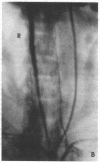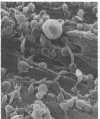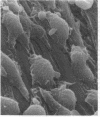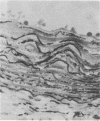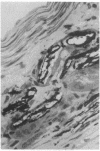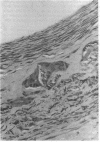Abstract
Experimental aneurysmatic dilatation of the rabbit common carotid artery was induced by a single, periarterial application of calcium chloride in vivo. Vessels were fixed in situ after 3 d, 1 wk, 3 wk, 6 wk, and 12 wk by intracardiac perfusion of glutaraldehyde and tissues prepared for light, scanning, and transmission electron microscopy. Progressive focal aneurysmal dilatation was seen limited to the site of calcium application with endothelial damage and thrombus formation in areas of irregular luminal contour. Disruption of the elastic network of the intima and media was seen with varying degrees of intimal fibromuscular hyperplasia and medial disorganization. The calcium-elastic tissue complex was the focus of the inflammatory, arteriosclerotic reaction and subsequent aneurysm formation. The inflammatory cell infiltration initially included primarily neutrophils followed by lymphocytes, plasma cells, monocytes, and multinucleated giant cells. These studies support the hypothesis that disruption of the elastic tissue network of the vascular wall represents an important pathogenetic factor in the initiation of aneurysmal dilatation. In addition, the results of these studies suggest that interaction of calcium with the elastica of the arterial wall may represent an important pathogenetic factor in the initiation of giant cell arteritis.
Full text
PDF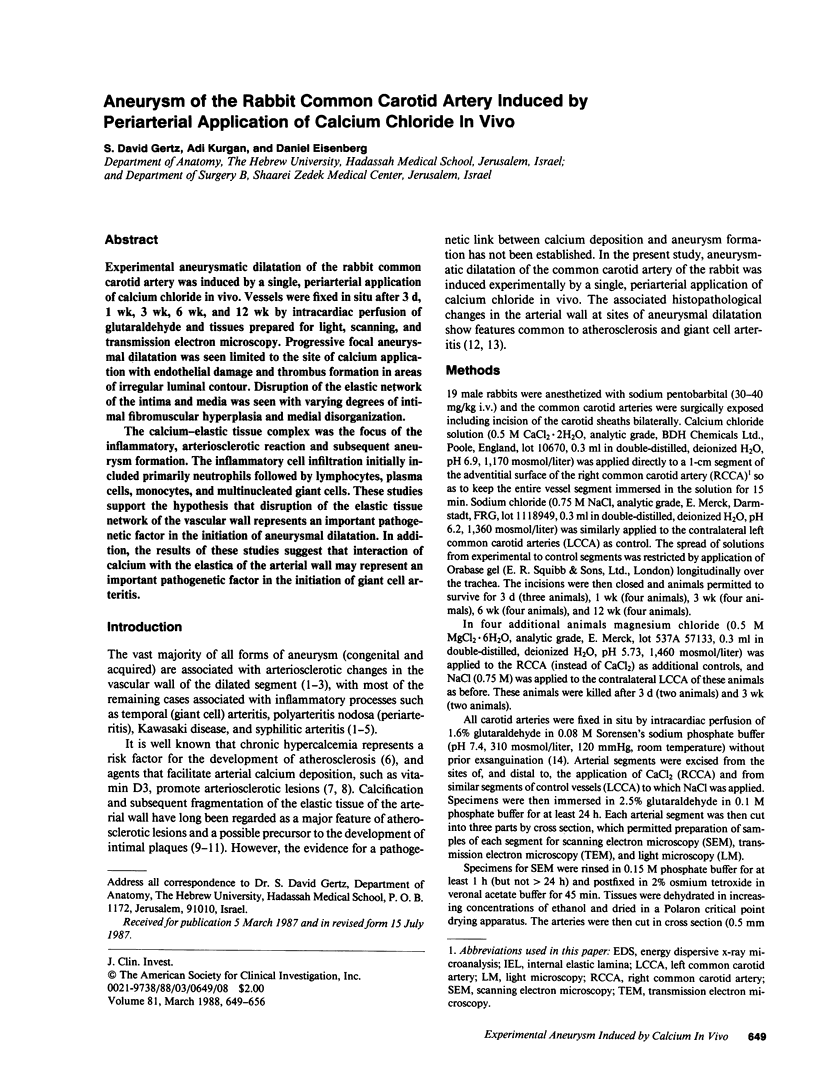
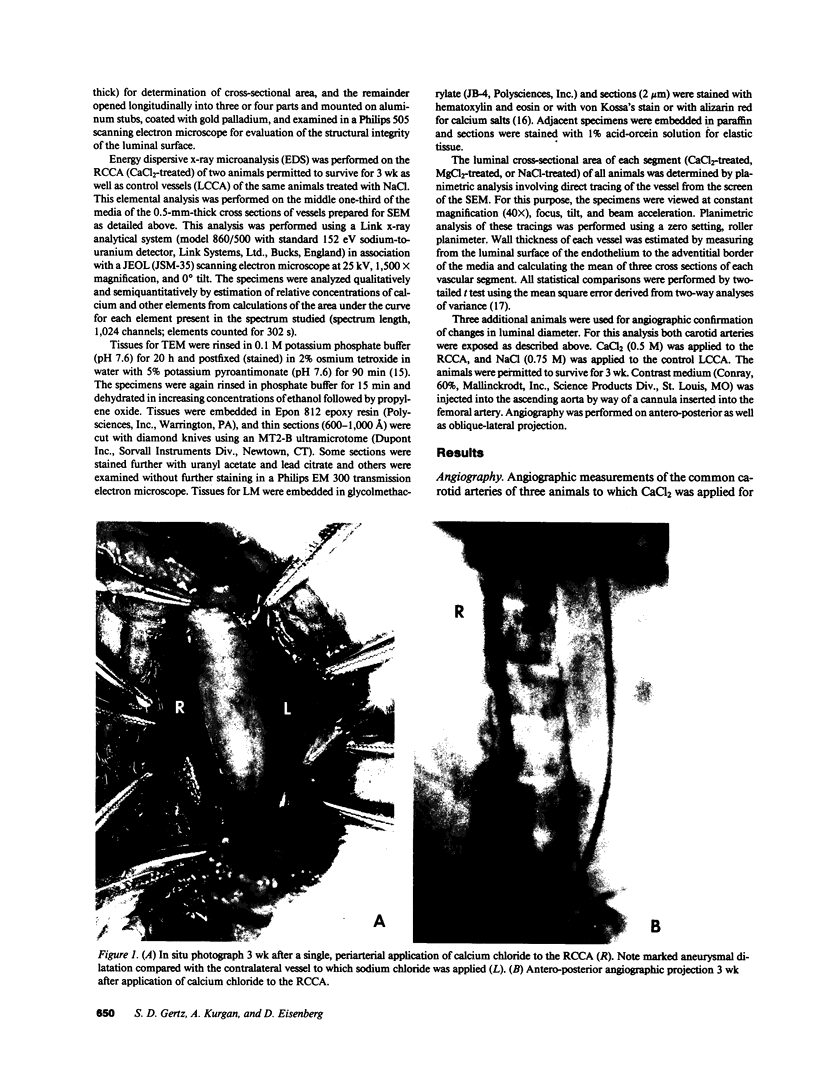
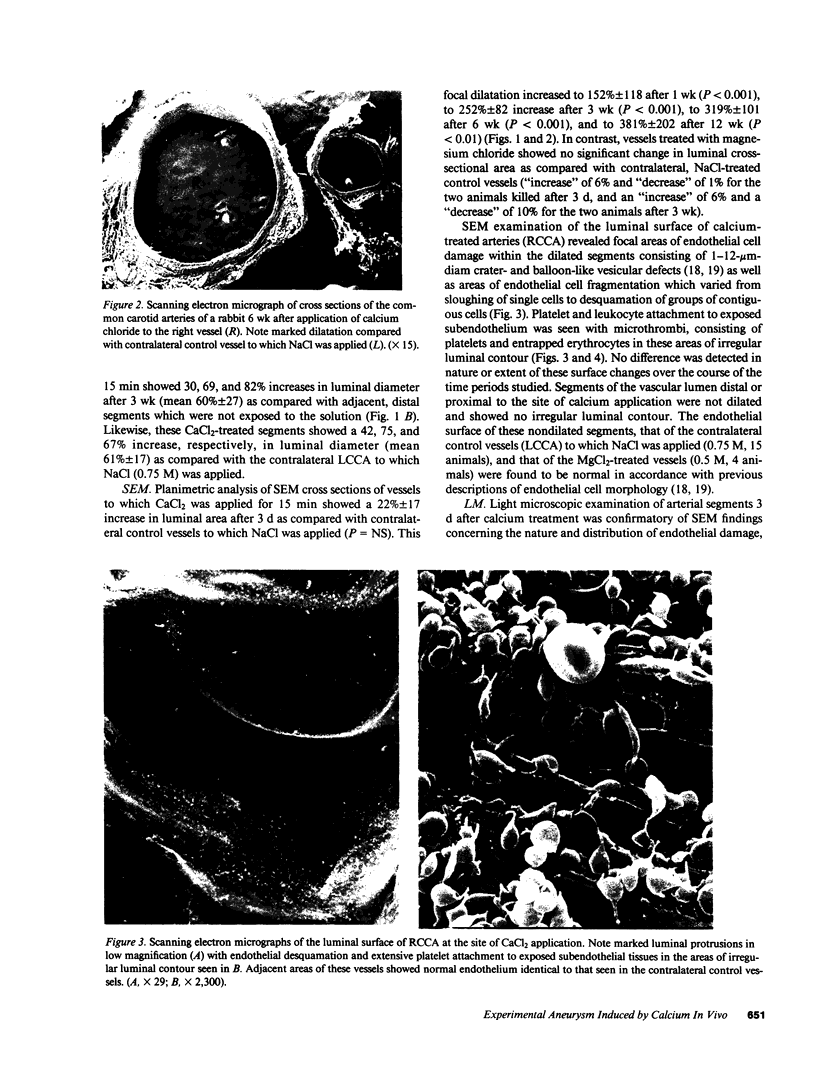
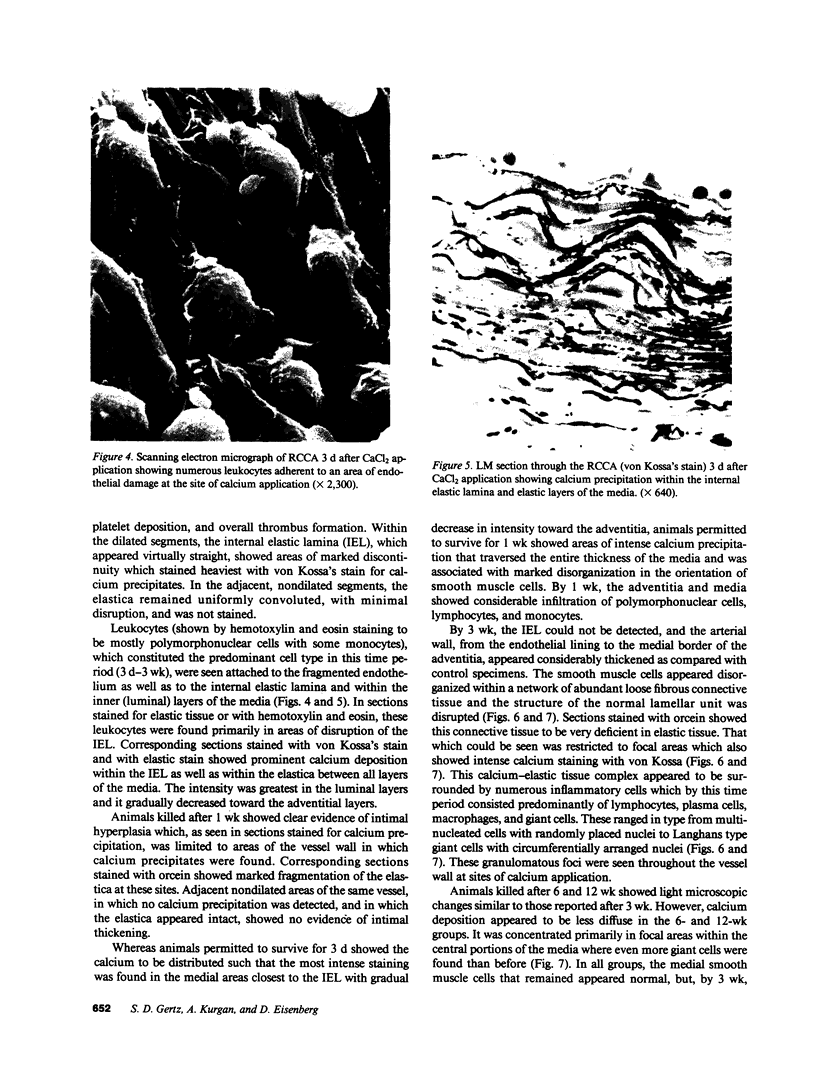
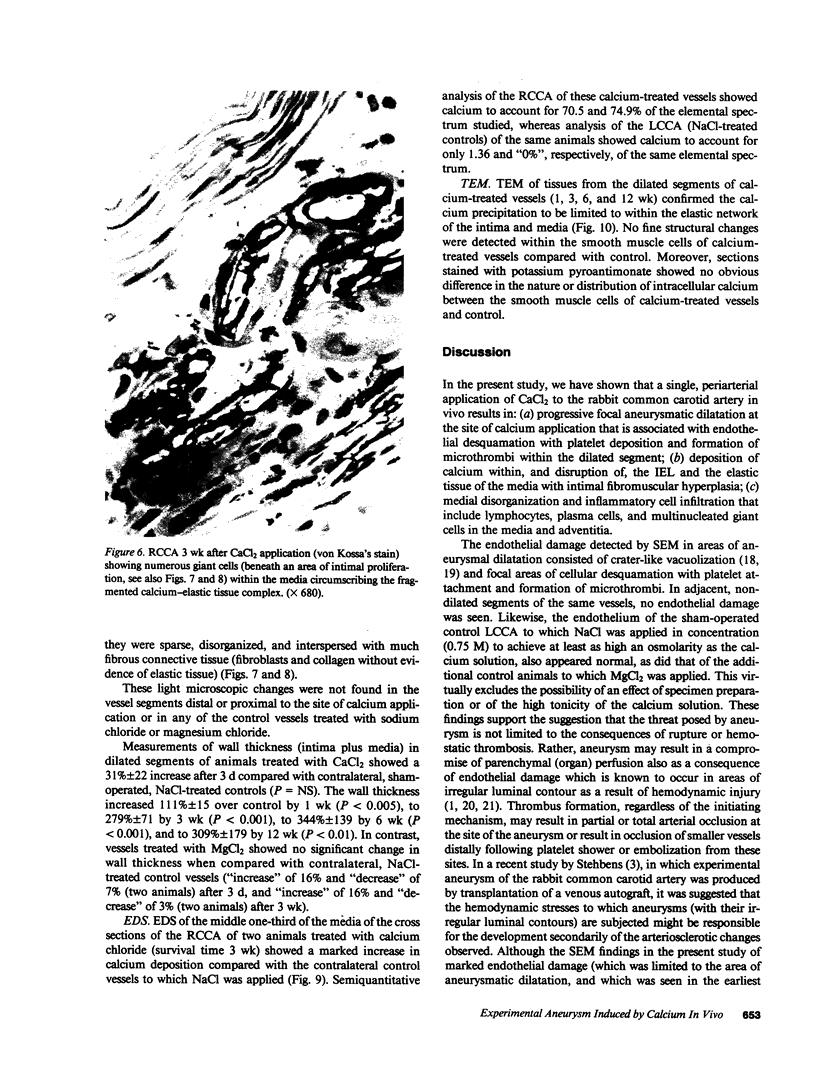
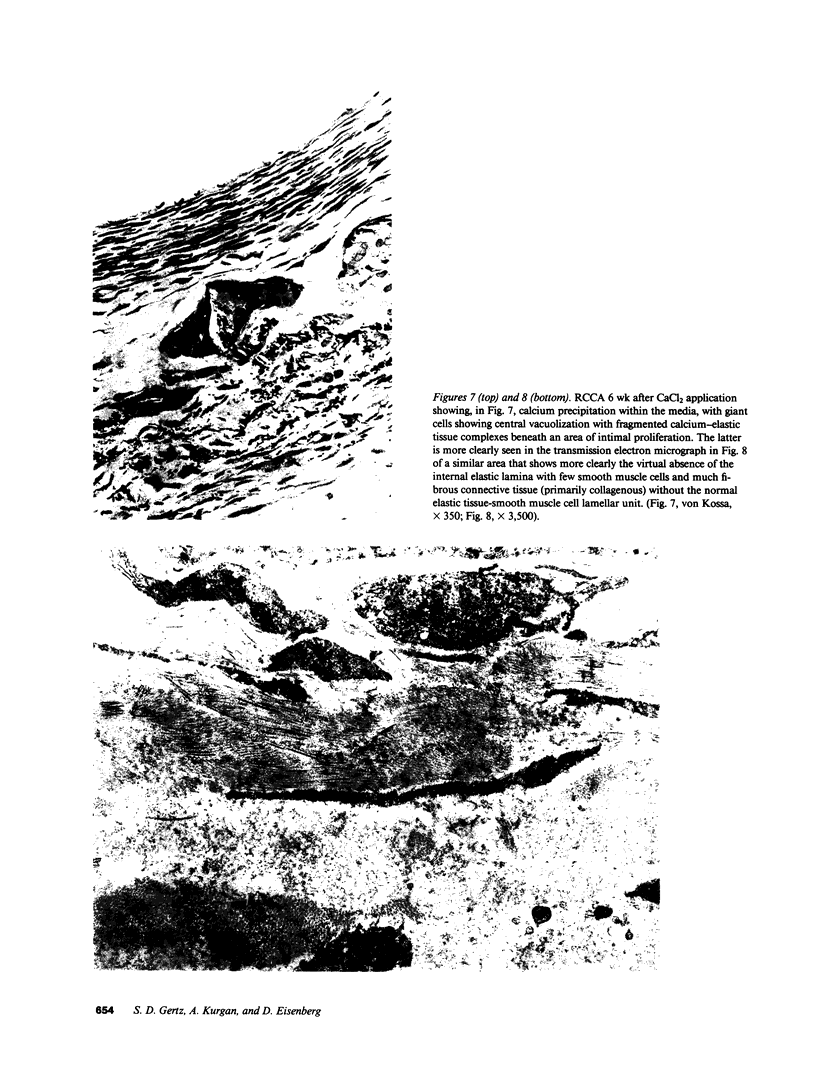
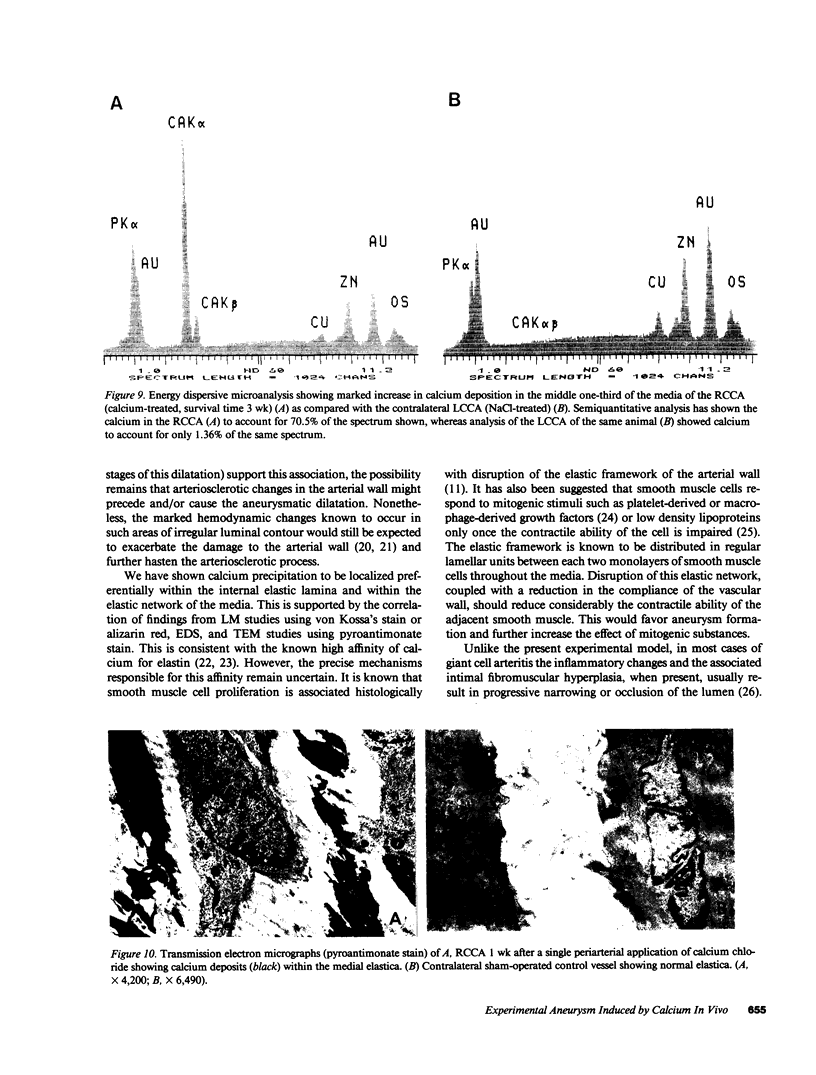
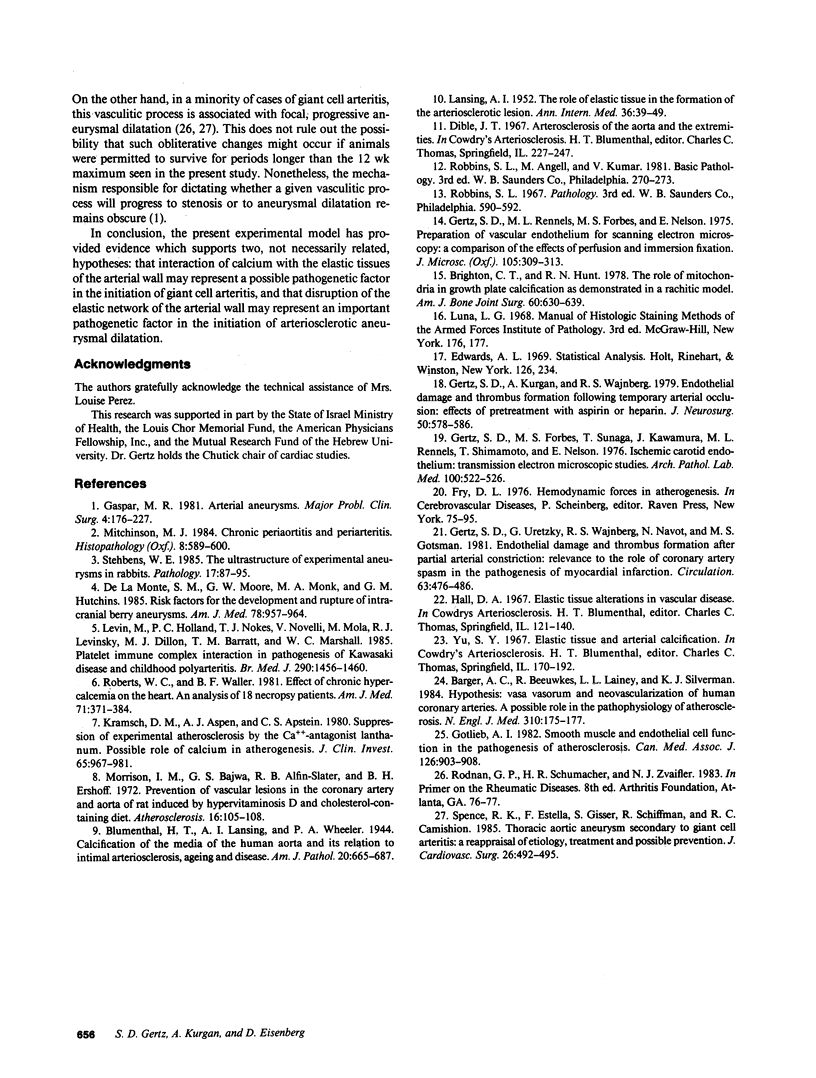
Images in this article
Selected References
These references are in PubMed. This may not be the complete list of references from this article.
- Barger A. C., Beeuwkes R., 3rd, Lainey L. L., Silverman K. J. Hypothesis: vasa vasorum and neovascularization of human coronary arteries. A possible role in the pathophysiology of atherosclerosis. N Engl J Med. 1984 Jan 19;310(3):175–177. doi: 10.1056/NEJM198401193100307. [DOI] [PubMed] [Google Scholar]
- Blumenthal H. T., Lansing A. I., Wheeler P. A. Calcification of the Media of the Human Aorta and Its Relation to Intimal Arteriosclerosis, Ageing and Disease. Am J Pathol. 1944 Jul;20(4):665–687. [PMC free article] [PubMed] [Google Scholar]
- Brighton C. T., Hunt R. M. The role of mitochondria in growth plate calcification as demonstrated in a rachitic model. J Bone Joint Surg Am. 1978 Jul;60(5):630–639. [PubMed] [Google Scholar]
- Gaspar M. R. Arterial aneurysms. Major Probl Clin Surg. 1981;4:176–227. [PubMed] [Google Scholar]
- Gertz S. D., Forbes M. S., Sunaga T., Kawamura J., Rennels M. L., Shimamoto T., Nelson E. Ischemic carotid endothelium. Transmission electron microscopic studies. Arch Pathol Lab Med. 1976 Oct;100(10):522–526. [PubMed] [Google Scholar]
- Gertz S. D., Kurgan A., Wajnberg R. S., Nelson E. Endothelial cell damage and thrombus formation following temporary arterial occlusion. Effects of pretreatment with aspirin or heparin. J Neurosurg. 1979 May;50(5):578–586. doi: 10.3171/jns.1979.50.5.0578. [DOI] [PubMed] [Google Scholar]
- Gertz S. D., Rennels M. L., Forbes M. S. Preparation of vascular endothelium for scanning electron microscopy: a comparison of the effects of perfusion and immersion fixation. J Microsc. 1975 Dec;105(3):309–313. doi: 10.1111/j.1365-2818.1975.tb04065.x. [DOI] [PubMed] [Google Scholar]
- Gertz S. D., Uretsky G., Wajnberg R. S., Navot N., Gotsman M. S. Endothelial cell damage and thrombus formation after partial arterial constriction: relevance to the role of coronary artery spasm in the pathogenesis of myocardial infarction. Circulation. 1981 Mar;63(3):476–486. doi: 10.1161/01.cir.63.3.476. [DOI] [PubMed] [Google Scholar]
- Gotlieb A. I. Smooth muscle and endothelial cell function in the pathogenesis of atherosclerosis. Can Med Assoc J. 1982 Apr 15;126(8):903–908. [PMC free article] [PubMed] [Google Scholar]
- Kramsch D. M., Aspen A. J., Apstein C. S. Suppression of experimental atherosclerosis by the Ca++-antagonist lanthanum. Possible role of calcium in atherogenesis. J Clin Invest. 1980 May;65(5):967–981. doi: 10.1172/JCI109783. [DOI] [PMC free article] [PubMed] [Google Scholar]
- LANSING A. I. The rôle of elastic tissue in the formation of the arteriosclerotic lesion. Ann Intern Med. 1952 Jan;36(1):39–49. doi: 10.7326/0003-4819-36-1-39. [DOI] [PubMed] [Google Scholar]
- Levin M., Holland P. C., Nokes T. J., Novelli V., Mola M., Levinsky R. J., Dillon M. J., Barratt T. M., Marshall W. C. Platelet immune complex interaction in pathogenesis of Kawasaki disease and childhood polyarteritis. Br Med J (Clin Res Ed) 1985 May 18;290(6480):1456–1460. doi: 10.1136/bmj.290.6480.1456. [DOI] [PMC free article] [PubMed] [Google Scholar]
- Mitchinson M. J. Chronic periaortitis and periarteritis. Histopathology. 1984 Jul;8(4):589–600. doi: 10.1111/j.1365-2559.1984.tb02371.x. [DOI] [PubMed] [Google Scholar]
- Morrison L. M., Bajwa G. S., Alfin-Slater R. B., Ershoff B. H. Prevention of vascular lesions by chondroitin sulfate A in the coronary artery and aorta of rats induced by a hypervitaminosis D, cholesterol-containing diet. Atherosclerosis. 1972 Jul-Aug;16(1):105–118. doi: 10.1016/0021-9150(72)90013-5. [DOI] [PubMed] [Google Scholar]
- Roberts W. C., Waller B. F. Effect of chronic hypercalcemia on the heart. An analysis of 18 necropsy patients. Am J Med. 1981 Sep;71(3):371–384. doi: 10.1016/0002-9343(81)90163-7. [DOI] [PubMed] [Google Scholar]
- Spence R. K., Estella F., Gisser S., Schiffman R., Camishion R. C. Thoracic aortic aneurysm secondary to giant cell arteritis: a reappraisal of etiology, treatment and possible prevention. J Cardiovasc Surg (Torino) 1985 Sep-Oct;26(5):492–495. [PubMed] [Google Scholar]
- Stehbens W. E. The ultrastructure of experimental aneurysms in rabbits. Pathology. 1985 Jan;17(1):87–95. doi: 10.3109/00313028509063733. [DOI] [PubMed] [Google Scholar]
- de la Monte S. M., Moore G. W., Monk M. A., Hutchins G. M. Risk factors for the development and rupture of intracranial berry aneurysms. Am J Med. 1985 Jun;78(6 Pt 1):957–964. doi: 10.1016/0002-9343(85)90218-9. [DOI] [PubMed] [Google Scholar]




